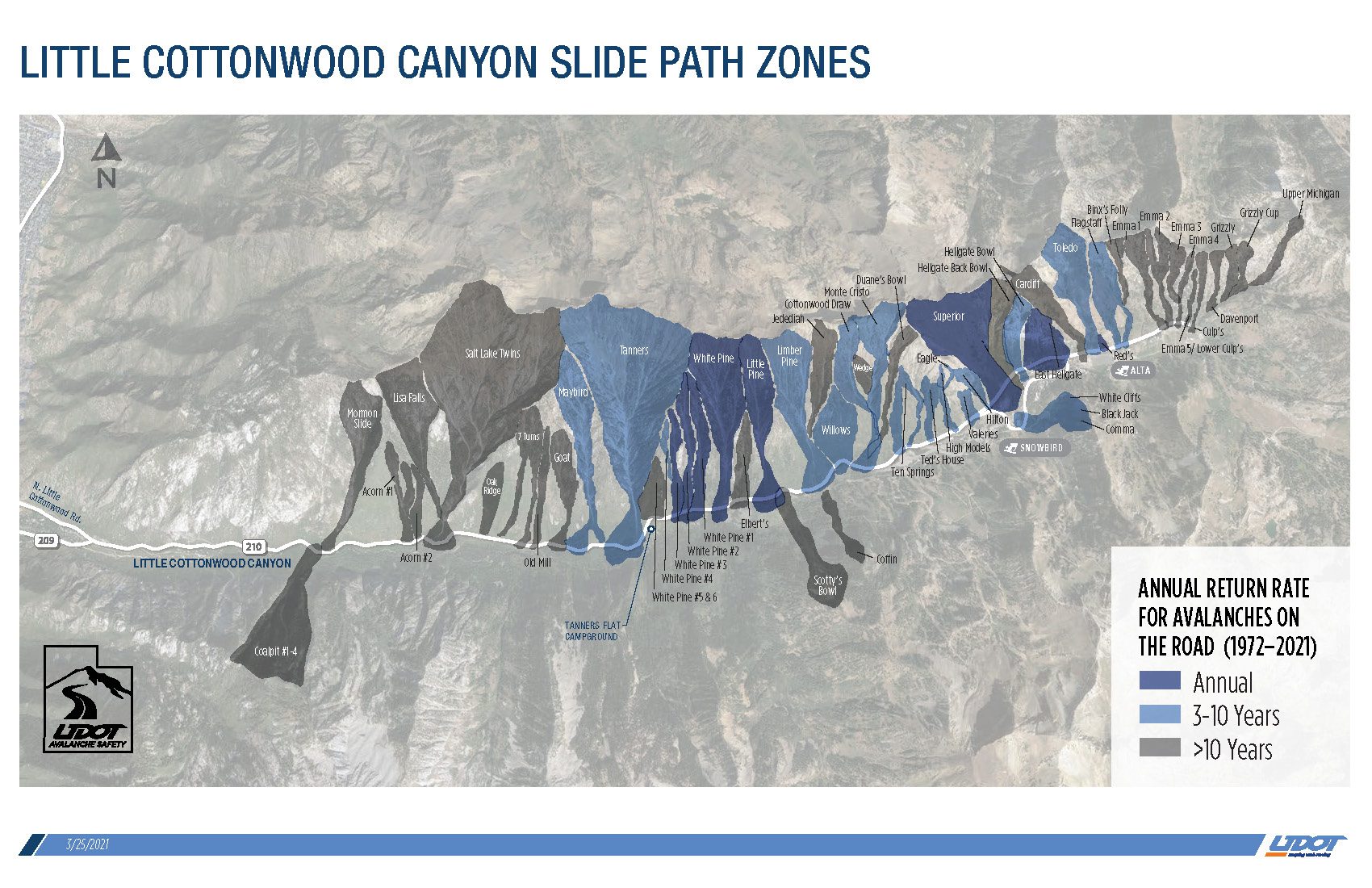Top Stories
UDOT and its never-ending battle with Utah’s snow

A series of snow plows working together to clear I-80. Photo: Courtesy of the Utah Highway Patrol.
UTAH — Through snowstorm after snowstorm, the battle to maintain roadways never ends for the Utah Department of Transportation crews. From the 481 full-time plow drivers clearing roads to the avalanche mitigation efforts, many moving pieces are working to clear roadways and prevent potential dangers to the public. It might be a pow day for most of Utah, but for others, it’s when the battle begins.
UDOT divides the state into four regions. The department operates 567 snow plow trucks and over 2,000 pieces of snow equipment to maintain more than 24,000 lane miles of roadway. While 48,908 public road miles fall under its purview, snow removal operations are only responsible for highway right-of-ways and designated state-owned roadways though exceptions can occur in emergencies. Each winter storm that passes through the state costs $1 million on average to perform winter operations.
Riding shotgun with the best in the business. 🤝 pic.twitter.com/2vSR0AZqoz
— Utah DOT (@UtahDOT) February 22, 2023
UDOT operates on a priority list during storms based on the importance of the roadway, such as interstates or primary routes to hospitals. These priority one routes are the first step as snowplows work to maintain at least one lane in each direction. From there, priority two routes come into play. These include routes to ski resorts or those used by school buses and various arterial routes that could be urban or rural. The location of snow plows can be tracked on the current road conditions map on the UDOT website.

Common tow plow win.👌
Swipe ➡️ to see it in action. pic.twitter.com/UhRcan3TMX
— Utah DOT (@UtahDOT) February 22, 2023
Throughout the winter season, 236,000 tons of salt are used. The number might sound big, but the entire U.S. uses more than 24,000,000 tons of salt annually during that same time period. The type of salt used changes based on the desired result. A salt brine, a mixture of salt and water, is used as a pretreatment before the snow moves into the area. Depending on the conditions, crews will use both the standard white salt to more high-performance salt such as de-slicking grit and volcanic cinders. In areas with high ice potential, such as in the cottonwoods, crews may spray potassium acetate, a deicer used to break that breaks down the bond between ice and snow.
Refilling with salt up Spanish Fork Canyon. On some highways we have satellite maintenance stations where we can stage crews and equipment before storms hit. They also provide a convenient location to resupply during storms.📍US-6, 12:25 a.m. pic.twitter.com/NYPC6w9q02
— Utah DOT (@UtahDOT) February 22, 2023
Avalanche mitigation is the other significant operation that UDOT carries out during the winter. Many canyons, such as Big and Little Cottonwood or Provo Canyon, are areas targeted by UDOT. Over 70 percent of the roadway in Little Cottonwood is directly in the path of multiple slide zones. A typical operation will close a roadway the night before efforts begin to ensure no one is in the area. Then early in the morning, crews will start the process using military artillery, hand charges, limited helicopter bombing, and remote avalanche control systems (RACS). While that might be the preferred path, closures can happen anytime based on conditions.

🚧 #RoadClosureUpdate 🚧 #SR210 is OPEN to all traffic. @UDOTAvy avalanche mitigation & roadway operations complete.
Expect uphill travel delays, you may not move quickly at first while queue clears.
🚨Traction devices are REQUIRED.@UDOTTRAFFIC pic.twitter.com/4Zd1kBzggx
— UDOT Cottonwood Canyons (@UDOTcottonwoods) March 1, 2023
We’re out here prepping, and we’re asking you to stay safe and consider staying off the roads Wednesday morning. 🧵 pic.twitter.com/RzXlNDSZn8
— Utah DOT (@UtahDOT) February 21, 2023
Understanding Utah’s Traction Law and the realities of winter driving


















